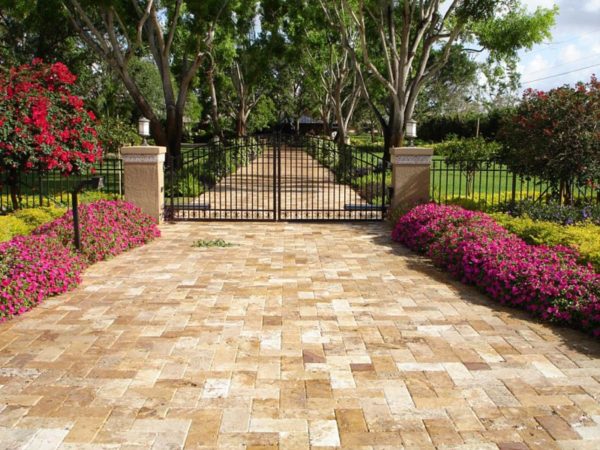Travertine pavers are a favorite choice for patios, pool decks, and walkways thanks to their timeless beauty and natural durability. But if you live in a humid or rainy climate, you might wonder — Does mold grow on travertine pavers? The short answer is yes, but there’s more to the story.
In this post, we’ll explain why mold can appear, how to prevent it, and what to do if it’s already present.
Why Mold Can Grow on Travertine Pavers
Travertine is a natural stone formed from limestone, featuring a porous structure. While this porous quality gives travertine its signature look, it also means:
-
Moisture can seep in: Standing water, sprinkler overspray, or humidity can create damp conditions in the stone’s pores.
-
Organic debris can collect: Leaves, dirt, and pollen can settle on the surface, providing a food source for mold spores.
-
Shady areas dry slowly: Pavers in shaded spots tend to stay damp longer, encouraging mold growth.
It’s important to note that mold does not damage travertine itself as quickly as it might damage softer materials, but it can discolor the surface and make it slippery.
How to Prevent Mold Growth on Travertine Pavers
Keeping travertine looking its best comes down to proper care:
-
Seal the pavers
Applying a high-quality, breathable stone sealer fills the pores and reduces water absorption. Reseal every 1–2 years depending on weather conditions. -
Ensure proper drainage
Standing water is mold’s best friend. Make sure your patio or pool deck slopes slightly to allow water to run off. -
Clean regularly
Sweep away leaves and debris, and rinse the pavers occasionally with a garden hose to remove dirt and pollen. -
Increase sun exposure if possible
Mold thrives in shade, so trimming back plants or trees to allow more sunlight can help keep the surface dry.
How to Remove Mold from Travertine Pavers
If mold has already appeared, here’s a safe cleaning approach:
-
Start with gentle cleaning
Use a soft-bristle brush, warm water, and a pH-neutral stone cleaner. Avoid acidic or harsh chemicals, as these can etch travertine. -
Rinse thoroughly
Remove all cleaning solution to prevent residue buildup. -
Consider professional cleaning
For widespread or stubborn mold, hire a stone care professional who can deep clean and reseal your travertine without damaging it.
Final Thoughts – Does mold grow on travertine pavers?
Yes, mold can grow on travertine pavers under the right conditions — especially in damp, shaded areas. However, with proper sealing, drainage, and maintenance, mold growth can be minimized or prevented altogether.
Travertine is a premium choice for outdoor spaces, and with a little care, it can stay beautiful for decades. Whether you’re installing new pavers or maintaining existing ones, consistent upkeep will ensure they remain a stunning feature of your home.

